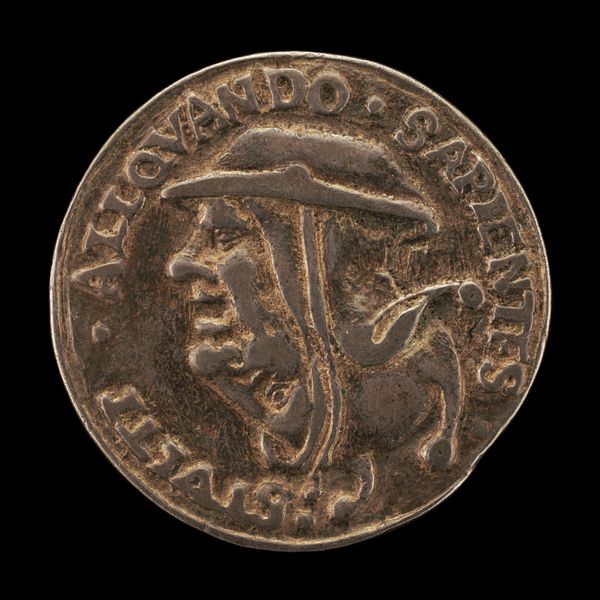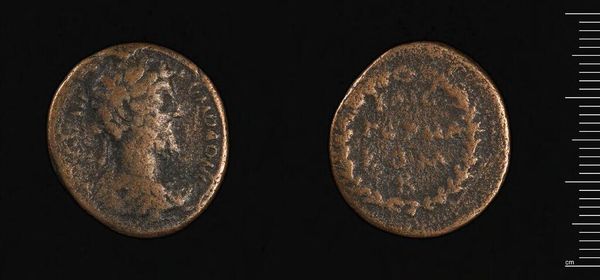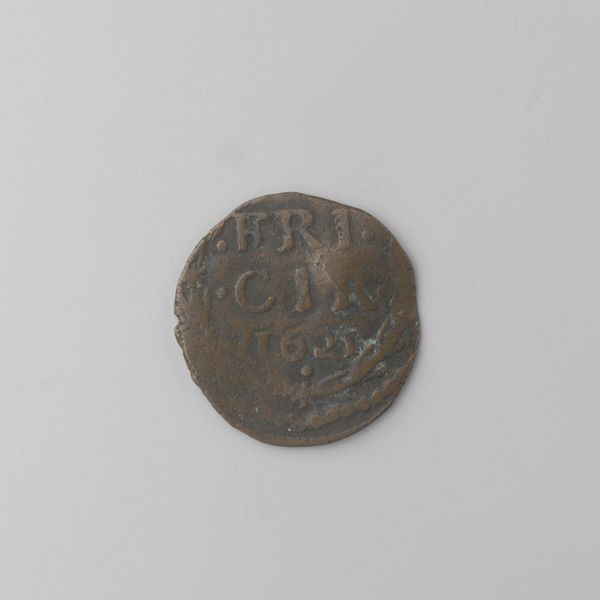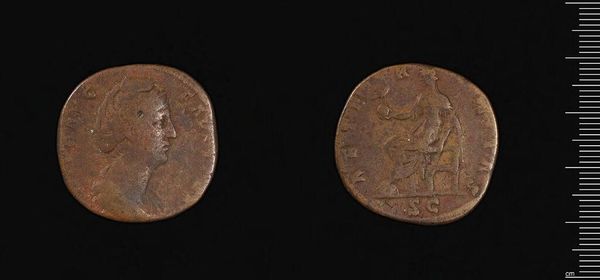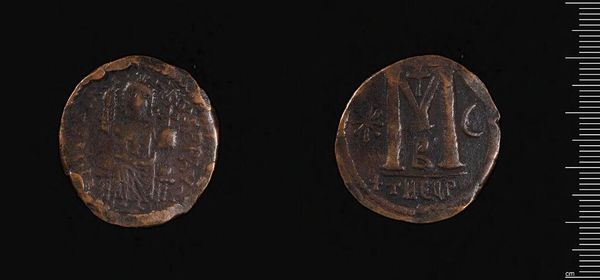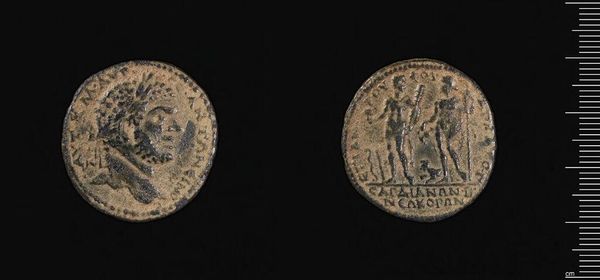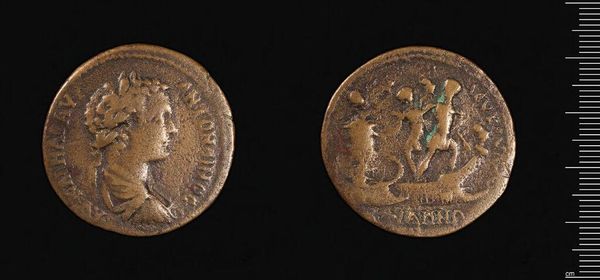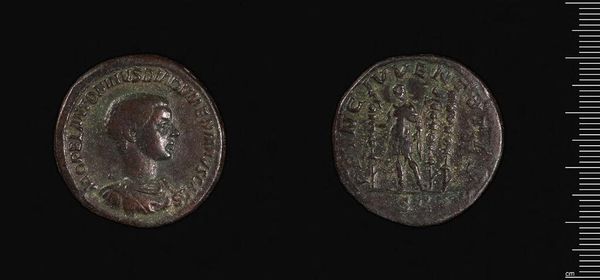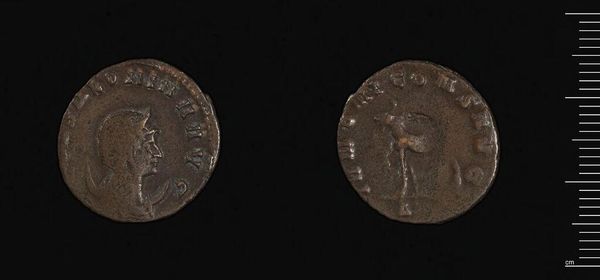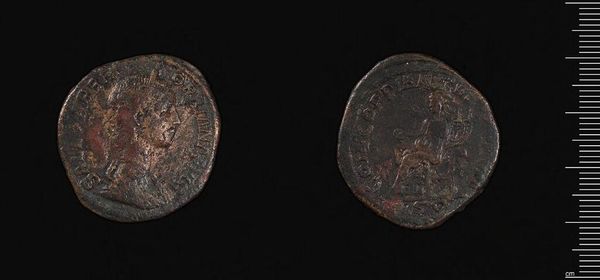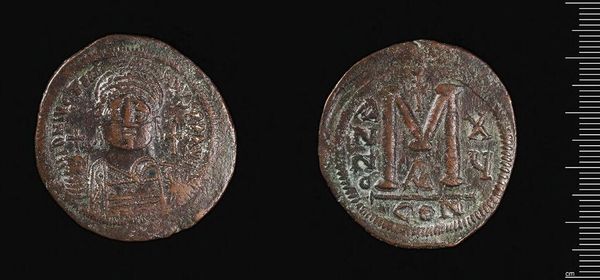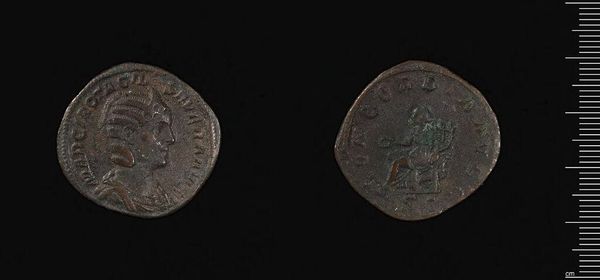
metal, relief, bronze
#
portrait
#
medal
#
metal
#
human-figures
#
relief
#
bronze
#
11_renaissance
#
men
#
history-painting
#
decorative-art
#
profile
Dimensions: Diameter: 1 3/4 in. (4.4 cm)
Copyright: Public Domain
Curator: Let's turn our attention to this bronze relief, "Restoration of Popery", crafted by Giovanni del Cavino in 1554. It’s currently held at the Metropolitan Museum of Art. Editor: Right, first impression? Well, it’s got this wonderfully solemn vibe to it. All in brown monochrome—feels serious, weighty, and a bit like discovering a pirate treasure—minus the jewels. Curator: The piece commemorates Queen Mary I's re-establishment of Catholicism in England. As you see, there is a portrait of Pope Julius III, identified as IVLIVS TERTIVS PONT MAX around the perimeter. The imagery reinforced Mary’s political agenda and aligned her rule with Papal authority during the Counter-Reformation. Editor: Fascinating. The level of detail, despite its size, really gets me. Look at the intricate modeling of his beard. I'd love to trace those lines with my fingertip, like feeling the current of history, you know? What was its initial reception? Was this made to be propaganda of some kind? Curator: These kinds of portrait medals served multiple purposes, mostly tied to display, prestige and commemoration. They would be presented as gifts, kept in personal collections to signal their support, and more prominently displayed publicly or integrated into architectural settings to promote political power or the sitter. They definitely were understood as visual endorsements or polemics during politically volatile years. Editor: So, in essence, wearable—or at least, holdable—propaganda. I imagine owning one during that period came with a hefty dose of either pride or peril. Depending on where your faith stood. I like that contrast: tiny object, colossal implications. I always forget the true power of portable art! Curator: Absolutely. Cavino was one of the most celebrated bronze medalists in Italy at the time, whose influence and technical ability were highly admired by patrons like Cardinal Alessandro Farnese. So you can also understand them as high art or treasured objects apart from being political symbolism. Editor: Ah, that explains the expert detail. Thinking about its placement— displayed or tucked away—tells a silent story about the owner's allegiance or secret yearnings. So this piece whispers and shouts, doesn’t it? A pocket-sized revolution. I'll leave thinking differently about medals now. Curator: Indeed. It brings a more tangible understanding to history. Let’s move on.
Comments
No comments
Be the first to comment and join the conversation on the ultimate creative platform.
